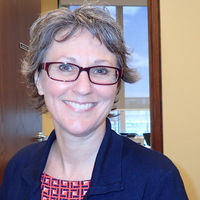I am not able to provide any pointers to academic documentation on the topic but can comment based on experience and on what we have been doing as a company (Leafsprout) in other Canadian jurisdictions.
In the realm of diagnostic imaging procedure codes, SNOMED CT does indeed seem to be misaligned with the inner workings of radiology on both the clinical side (after all "Chest Abdomen" or "Abdomen Pelvis" procedures are quite common radiological procedures) as well as the technical side (the DICOM standard has supported composite body parts from the get-go, e.g., CHESTABDOMEN, ABDOMENPELVIS, CHESTABDPELVIS were defined for a reason -- there are real-world imaging procedures for those). Enhancing SNOMED CT looks to me like a possible but expensive path that may or not be worth it depending on the expected return on investment. Most jurisdictions around the world tend to use CPT-like approaches to DI procedure codes in which the emphasis is put on the ability to unambiguously identify a real-world clinical event/procedure rather than on combining the identification aspect with the descriptive/hierarchical/relationship-management aspect, the latter aspect using intricate concept-based modelling approaches with their own limitations that you are facing.
Getting the procedure codes under control is, in my opinion, of paramount importance to any health system. After all, these codes address key facets of healthcare delivery: the clinical perspective, which is understanding what medical event took place -- procedure code tells us what was done, precisely; and the administrative/financial perspective, which casts light on how much money was spent/made in the process -- procedure code ultimately tells us how much it cost. From what I have observed over the years, the rule of thumb is that the closer the procedure codes stay to the reimbursement model, the more aligned the two aforementioned facets of healthcare are, and the more value you can get down the road from using them (including tackling more advanced topics like population health, analytics, etc). So perhaps there is no reason to be reinventing the wheel here by extending SNOMED CT to express DI procedure codes that have already been in use for many years now. What's needed is a normalization/canonicalization of the various vernaculars currently used in the province so a global set of codes can be devised.
For what it is worth, this is what we've done in BC. It seems to be working so far. Our systems manage and enforce the authoritative set of diagnostic imaging procedure codes used throughout the province (~3k procedure codes). This is the so-called global/provincial set. Every single DI study and report is assigned a code from this set. We also manage various local procedure code vernaculars (many sets of 2k-3k codes each used in different regions) and perform the translation between the provincial set and the local sets which were left intact. The nature of this translation is quite complex and beyond the scope of this email (e.g., what happens when a PET/CT exam is brought into an environment where PET procedures are not performed, etc.). SNOMED CT is not used for procedure codes in BC. What is used is a province-controlled and province-assigned set of procedure codes. When at the outset of the project we looked at the problem, jointly with BC, SNOMED CT was not a contender for the procedure set vernacular as the key objectives were:
- alignment with the administrative and clinical needs, including the ability to express the clinical procedures - like "CT Chest Abdomen with Contrast" - that are currently in use in the province (with no dependence on external assigning body for procedure codes)
- ease of translation between existing local terminologies - procedure code sets - used by different RIS systems and the newly proposed provincial-level terminology (see my earlier comment about the local vernaculars staying intact)
- attainability of a working solution involving 90% of BC's hospitals within 12 months
Back to the Infoway perspective: as the CHI Standards Collaborative for Diagnostic Imaging (now DI Working Group) our approach to coding/vernaculars has always been that "the choice of terminology - which is usually an idiosyncratic property of the environment at hand - rests with the affinity domain / jurisdiction that is embarking on a project which requires controlled vernacular(s)". From that perspective, I am a bit confused on what Canadian (cross-jurisdictional) extensions we'd be seeking from SNOWMED CT on the topic of DI procedures. If Ontario is seeking procedure-related enhancements from SNOMED CT, it is certainly a path that could be taken. It may be a long journey though due to the aforementioned alignment issues, or lack thereof, so before embarking on it may be worthwhile to step back and think of the objectives.
Cezary



